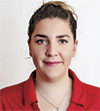We first need to remember that this is a minimum requirement program. Going above and beyond the requirements outlined by proAction may not get you bonus points on your validation, but it might get you bonus points from your cows. Optimal cow comfort will lead to healthier cows with longer longevity, higher fertility and better overall productive efficiency. However the first step to optimizing cow comfort is to identify the level of comfort your cows experience every day. An indicator of this is your results from the animal care assessment.
Animal care assessments provide a benchmark for the level of injuries, body condition and lameness in your herd of milking cows. You should note in this program, hair loss on hocks, knees and necks (those scored as 1), cows that are over-conditioned (body condition score greater than 4) and cows that are mildly lame (those scored as 3) are not considered in need of corrective action. However these cows, in addition to the cows with more severe problems, are good warning signs of reduced comfort in your herd. Just because proAction Animal Care does not consider these in need of corrective action does not mean you shouldn’t either.
If you already had your animal assessment done and you passed with flying colours, congratulations! However, take a closer look at your report: Did you have a number of cows scored as 3 (mildly lame) for lameness or as 1 (hair loss) for injuries? If yes, these are opportunities for further improvement of cow comfort on your farm.
What your animal care assessment won’t include is a score for every cow in your herd; the assessor will only score a sample of your cows. Nor will it necessarily tell you where the problems identified (if any) are coming from or how to fix them. Therefore the second step to addressing a cow comfort problem, once identified, is to ensure you are working with a great team to help address it. Your team should include your nutritionist, your veterinarian, your hoof trimmer and any others you use to support the well-being of your herd. A team approach is the best way to tackle problems like lameness, because they are often multi-factorial (meaning there could be more than one cause to your problem). Even more important, a good team will help you prevent problems from occurring. Once lameness and injuries are under control, preventative measures need to be taken to ensure they don’t come back.
Your team will help guide you through the many resources available to you to optimize cow comfort, and address and prevent animal care challenges. Some of these resources are listed on the Dairy Farmers of Canada website at the link below. The C.O.W.S. program is the resource I am most familiar with, as I manage it across Canada. This program is available to farmers free of charge: It will assess your cows for lameness, injuries and lying time, and also take a wide-range look at barn and management measures to identify where a problem might be coming from. More than 1,000 farms have been part of this program across North America, and it provides some great insight on solutions that work, and those that don’t. Through this program, you can compare your farm to other farms across Canada, and from coast to coast in the U.S. This program is available through some nutrition companies, so ask your nutritionist or sales representative if he or she has access.
Remember, the Animal Care program is only a starting point to achieve optimal cow comfort. It’s up to you to use this information to optimize your operation and build a good support network to do so.
The proAction Animal Care program is not happening to you, it’s happening for you. Take advantage of this opportunity. ![]()
Visit the Dairy Farmers of Canada website and the Novus website for more information on the programs mentioned above.

-
Clem Nash
- Ruminant Specialist
- Novus Canada








